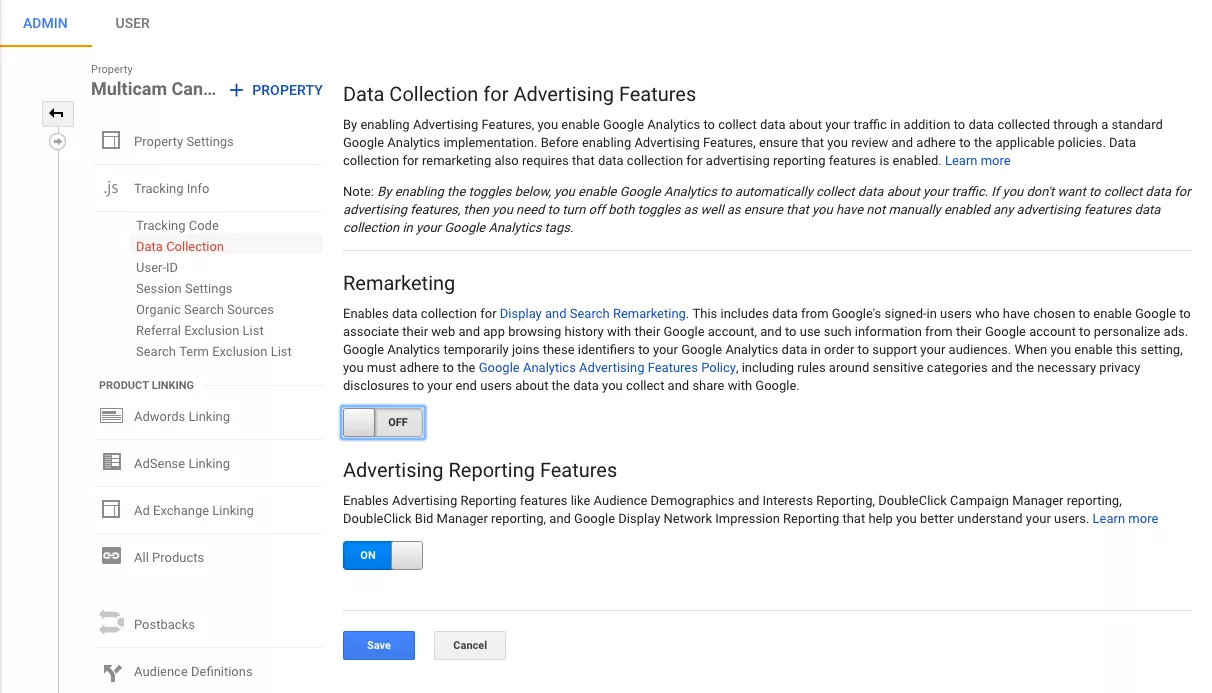Taking Advantage Of Remarketing in Google Analytics: A Comprehensive Guide
Taking advantage of remarketing in Google Analytics supplies companies a strategic edge in getting to out to possible customers. This guide will shed light on the essential actions entailed in harnessing the complete possibility of remarketing in Google Analytics, leading to boosted advertising results.
Comprehending Remarketing in Google Analytics
Remarketing in Google Analytics enables companies to tactically target individuals who have formerly communicated with their site or mobile app. By leveraging information from Google Analytics, companies can create customized remarketing listings based upon individual behavior, such as pages seen, actions taken, or specific goals achieved. This powerful device allows companies to re-engage with users that have actually shown rate of interest in their products or services, inevitably increasing the probability of conversion.
Understanding the various sorts of remarketing strategies is critical for an effective project - What Is “Remarketing” In Google Analytics?. Google Analytics uses various options, consisting of common remarketing, dynamic remarketing, and remarketing lists for search ads (RLSA) Each kind serves an one-of-a-kind objective and can be customized to meet specific advertising and marketing goals
Furthermore, evaluating the efficiency of remarketing projects is necessary for maximizing outcomes. Google Analytics supplies important understandings into the performance of various remarketing techniques, enabling companies to make data-driven choices and refine their targeting method. By continuously keeping track of and changing remarketing initiatives based upon analytics data, companies can maximize ROI and drive success in their advertising campaigns.
Establishing Remarketing Campaigns

After setting up target market lists, the following action is to link Google Analytics with Google Ads. By connecting these 2 systems, companies can seamlessly transfer audience lists from Google Analytics to Google Advertisements for remarketing functions. This combination permits more exact targeting and better campaign efficiency.
As soon as the accounts are connected, companies can produce remarketing campaigns in Google Advertisements using the target market lists formerly specified in Google Analytics. These projects can be customized with certain ad creatives, messaging, and bidding process approaches to properly re-engage with past site visitors and drive conversions. By following these actions, services can utilize the power of remarketing to boost their advertising and marketing efforts and boost ROI.
Making Use Of Audience Division Methods

Predefined segments in Google Analytics permit you to quickly evaluate common target market categories fresh individuals, returning individuals, or users who completed a particular goal on your web site. Custom-made sectors, on the other hand, allow you to create one-of-a-kind sections based upon specific requirements that are necessary to your company goals. Dynamic remarketing lists instantly change based upon customer habits, revealing individualized advertisements to users who have actually connected with your website in specific methods.
Analyzing Remarketing Performance Metrics
Upon assessing the effectiveness of remarketing projects in Google Analytics, the evaluation of crucial efficiency metrics supplies valuable More hints understandings right into target market engagement and conversion rates. By delving right into metrics such as click-through prices (CTR), conversion prices, price per purchase (CPA), and return on ad invest (ROAS), marketing experts can evaluate the success of their remarketing initiatives. CTR suggests the percentage of customers that clicked on the ad after watching it, showing the ad's importance and charm. Conversion prices measure the percentage of users that finished a wanted activity, such as buying, after clicking the advertisement. CPA exposes the ordinary price incurred for every conversion, assisting assess campaign earnings. ROAS, on the other hand, measures the earnings produced for every single dollar invested on advertising. Analyzing these metrics enables marketing next page experts to maximize projects, improve audience targeting, and allocate spending plans successfully to improve total remarketing performance.
Optimizing Remarketing Methods
When refining remarketing approaches in Google Analytics, concentrating on target market segmentation is extremely important for accomplishing campaign success. By splitting your target market into certain segments based upon their behavior, demographics, or interests, you can customize your ads more properly per team. This targeted approach raises the chance of engaging users who have actually currently shown rate of interest in your product and services, bring about greater conversion prices.
Another crucial facet of enhancing remarketing methods is continuously testing and refining your projects (What Is “Remarketing” In Google Analytics?). A/B screening various advertisement creatives, messaging, or offers can assist you identify what reverberates best with your target market and drives one of the most conversions. By examining the performance of these tests in Google Analytics, you can make data-driven choices to enhance your remarketing efforts further
Furthermore, leveraging vibrant remarketing can significantly boost your campaign results. This function allows you to reveal customized ads to customers based upon their past interactions with your site, showcasing services or items they have actually formerly seen. By delivering customized material to users based upon their interests and habits, dynamic remarketing can aid increase involvement and drive conversions.
Conclusion
In verdict, taking advantage of remarketing in Google Analytics is a calculated method to target individuals who have formerly engaged with a website. By creating customized target market listings and utilizing audience Check This Out division methods, businesses can maximize remarketing advocate increased conversion rates. Evaluating performance metrics and constantly maximizing strategies are essential for making best use of the efficiency of remarketing initiatives.
Google Analytics provides numerous choices, consisting of typical remarketing, vibrant remarketing, and remarketing listings for search advertisements (RLSA)After establishing up audience checklists, the next step is to connect Google Analytics with Google Ads. By connecting these 2 platforms, companies can seamlessly transfer target market listings from Google Analytics to Google Advertisements for remarketing functions.Once the accounts are linked, services can create remarketing projects in Google Advertisements making use of the target market details previously defined in Google Analytics.When refining remarketing techniques in Google Analytics, concentrating on target market segmentation is extremely important for achieving project success.